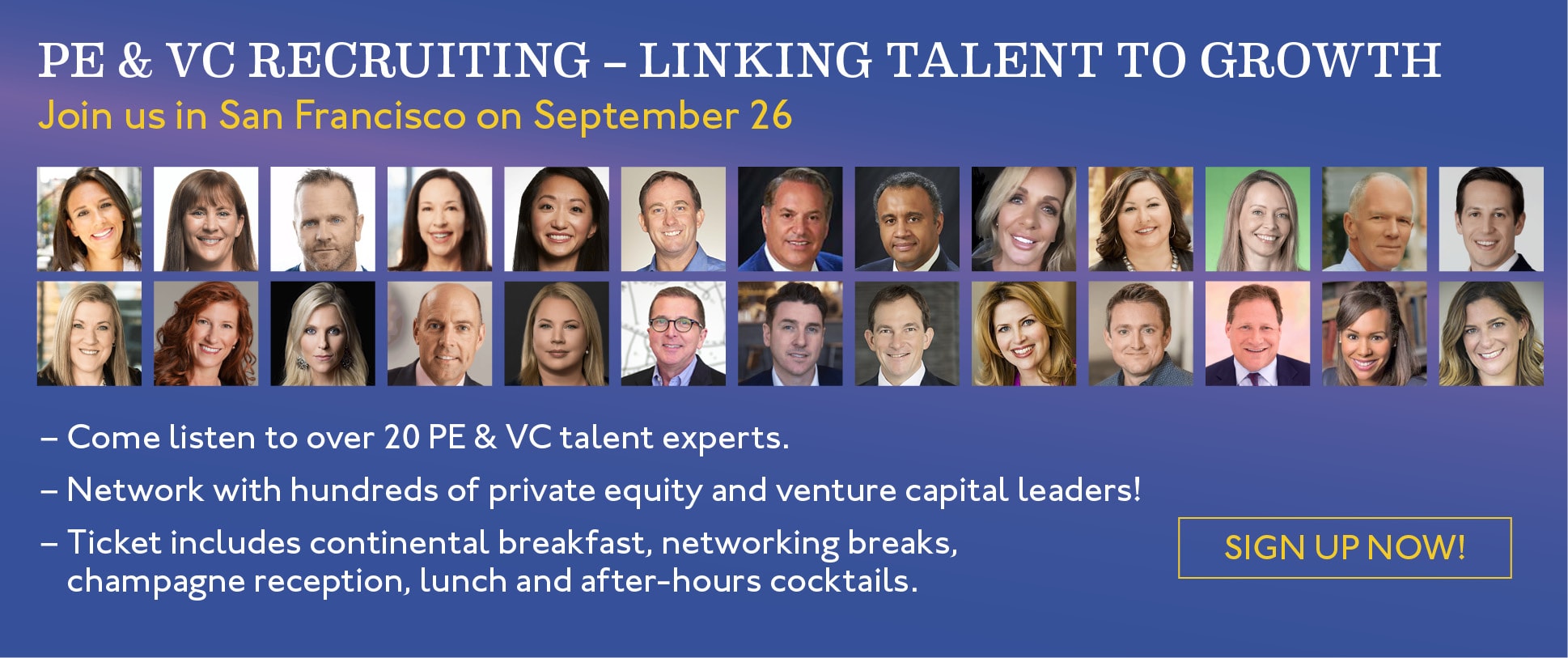Facebook, Apple and Netflix Have a Secret Hiring Weapon

September 17, 2019 – The companies that many of us take for granted and make use of day-to-day are tech giants like Facebook, Apple and Netflix. These businesses have scaled quickly, innovated and beat their competition to become the gold standard for what they do. “This growth and success didn’t happen in a vacuum — it happened because they have a knack for hiring the right people, every time,” says J. Reed Flesher, founder and president of Philadelphia-based Thrive, which develops software for recruiters and talent executives.
“The hiring process, especially when a recruiting firm is involved, requires input from many different stakeholders,” said Mr. Flesher. “Hiring for companies like Facebook, Apple and Netflix means the formula for success comes down to balancing input and feedback from everybody involved. Without that, even a home-run candidate will not be a sure bet for their perfect role. Any hiring team or search firm can learn a valuable lesson from the one thing that all these companies do better than everyone else — collaborate.”
Just like they do at other companies, candidates applying for positions at Facebook, Apple and Netflix go through multiple rounds of interviews with different stakeholders. Mr. Flesher said that this ensures that each company uses blended perspectives to create the best hiring process, including input from department heads, recruiters, HR, hiring managers and team members.
Collaborative Hiring Process
“What these companies do differently isn’t some magic interview formula or secret hiring algorithm,” he said. “Whether between the recruitment team and the department hiring or the junior members of the HR department and the head of people operations, all stakeholders are locked into collaboration at each stage of their hiring process.”
 Reed Flesher is the founder and president of Thrive, which provides powerful executive recruiting and talent relationship management (TRM) software solutions. The company works with search firms, in-house corporate recruitment teams, and venture capital/private equity firms to help them manage passive candidate networks and hire top talent.
Reed Flesher is the founder and president of Thrive, which provides powerful executive recruiting and talent relationship management (TRM) software solutions. The company works with search firms, in-house corporate recruitment teams, and venture capital/private equity firms to help them manage passive candidate networks and hire top talent.
Chris Saint-Amant, a Netflix hiring manager, said: “What’s really unique about the culture around recruiting at Netflix is the collaboration between the hiring manager and the recruiting team.” The key is keeping discussion flowing throughout the process. “We have a lot of back and forth and a lot of debate. The recruiting team is really engaged with our teams, so they can ask the right types of questions about, ‘Hey, I thought this is what your team was looking for,’ or ‘This is the direction you’re heading in now; is this person really going to add to that?’” This means recruiters are fully embedded in Netflix’s hiring process and consistently able to determine hits, misses and appropriate next steps.
For Apple, Mr. Flesher said that collaboration isn’t just part of recruiting; it’s embedded into the company’s DNA. As a CBS team working on a video piece about Apple noted: “As the 60 Minutes team members spoke with Apple’s high-level staff, on camera and off, they began to hear some of the same words and phrases repeated: ‘simplicity,’ ‘collaboration.’” This is felt by employees at all levels. “They desire and demand a collaborative atmosphere,” said one contractor when asked about Apple’s corporate culture. Whether it’s coding projects or recruitment, Apple places a premium on collaboration.
At Facebook, Mr. Flesher said that collaboration is also part of the company’s ethos. “Openness and transparency, building community, collaborating — it’s all part of the way we work together,” said Lori Goler, vice president of people at Facebook, told Business Insider. Janelle Gale, VP of HR at Facebook, has also confirmed that openness and communication are an important cultural element at Facebook. “The level of transparency we have is pretty remarkable relative to many organizations I’ve worked with,” she said. “A lot of this is based on the product itself, which is about creating openness and connection in the world, and that really culturally emanates for us. Our philosophy when we look for a search firm is not simply to move the work externally—because we have people inside to do the work—but to work with a firm that has a deep understanding of the talent.”
 Your Playbook for Better Collaboration In Executive Search
Your Playbook for Better Collaboration In Executive Search
Collaborative hiring can shorten the time-to-hire and increase a placement’s time spent in a role, two key recruiting benchmarks. But a successful hiring process requires more than that. Here’s some fresh thinking and a new approach.
“This means they look to search firms to be collaborative partners, not just option generators, which is exactly in line with their company’s ethos,” Mr. Flesher said.
Why Collaboration Works
Mr. Flesher said that collaboration positively affects the entire recruitment process, from internal discussion on candidates to aligning with clients. Among the key benefits of collaboration:
- It gives the best perspective on any given candidate because every person involved in hiring has a clear voice that others respect.
- It leads to fewer mistakes — communication and documentation are essential to good collaboration, and they cut down on work slipping through the cracks or being done in different ways by different people.
- It empowers teams to be efficient by streamlining the recruitment and hiring process no matter how many people, departments or candidates are involved, which saves time and increases productivity.
- It enhances real-time communication internally (among hiring teams and other departments) and externally (with clients for search firms, with search firms for clients) because all parties enter discussions starting from the same page.
 5 Reasons Why Top Recruiting Firms Rely on Real-Time Collaboration
5 Reasons Why Top Recruiting Firms Rely on Real-Time Collaboration
The world of executive recruiting has changed significantly in the past decade. Technology-aided candidate assessment methods, for example, are now commonplace. And search firms are expanding the services they offer, as clients place a greater emphasis on succession planning, culture fit and talent management solutions that go far beyond recruiting.
As a result, executive recruiting firms have had to adapt to change and adjust processes on-the-fly much more than in the past — all while client expectations rise, hiring behaviors and norms change, and as competition makes the race to hire the best available executive talent more fast-paced than ever, according to a new report by J. Reed Flesher, founder and president of Philadelphia-based Thrive.
“Everyone working in candidate search can appreciate these benefits,” Mr. Flesher said. “Still, collaboration can seem like an intangible element that is difficult to implement, especially if you are an executive search firm working with a myriad of internal teams at a number of companies. But it is possible to purposely foster a collaborative approach from the start.”
Harnessing the Power of Collaboration
Sometimes, the signs of communication breakdown are obvious, like when Google interviewed candidates up to 16 times before they implemented a structured, collaborative hiring process. “Things like over-interviewing can be a sign that stakeholders aren’t aligned on hiring criteria, and information isn’t being freely shared,” said Mr. Flesher. “Even if your warning signs aren’t quite that extreme, your recruiting firm or team may still suffer from friction and inefficiencies. This can have an enormous impact on your business and your ability to foster good relationships with clients.”
Thrive offers some common examples of breakdowns, their causes and actionable next steps for each phase of the hiring process — most of which require process changes your team can implement at little or no cost:

Kickstart Collaboration Now
Mr. Flesher said that if you don’t have time for a full audit of your recruiting teams and processes, one thing you can do to harness collaboration right now is to ask whether or not you have a single source of truth for candidate information. “This is one of the biggest problems that executive recruitment teams at search firms face, and it is a great problem to tackle first, as it will lay the groundwork for bigger changes around how your team works,” he said.
Centralizing information in a hub that updates in real time ensures that critical information is: Accessible to every stakeholder, stored in a place specifically organized for recruiting and search, and updated automatically for everyone when one person makes a change.
“While the best tool for this will be a specialized recruiting software, you can start to significantly streamline your process with free or low-cost tools,” Mr. Flesher said. “Eventually, you will max out on what nonspecialized tools can do, but if you are working from a siloed system of Word documents and carbon-copied emails, you can make strides with generalized apps.”
For example:
- A Google doc that syncs instantly and is accessible to everyone is a big step up from relying on email attachments of Word documents or PDFs that can quickly become out-of-date.
 10 Tips for Networking with an Executive Recruiter
10 Tips for Networking with an Executive Recruiter
As invaluable as executive search firms are for companies, they can also make a tremendous difference in the careers of professionals who are in the market for a new job. Tapping into a recruiter’s help calls for forethought as well as networking skills.
- A Trello board with client-facing candidate information can be shared and updated, so all relevant parties can get the most up-to-date profile of potential hires without any email forwarding.
- A joint search firm-client online calendar can be used to show appointments for candidates, so all parties know what stage of the recruitment process a potential hire is at.
“Whatever tools you choose, make sure that your team has bought into better communication and is putting collaboration at the front of your process,” Mr. Flesher said. And be mindful that overhauling a bad system can take time. Your team will need to learn new habits as you reorganize where you store and how you share information.”
Collaboration in Recruiting
“Facebook, Apple and Netflix are able to hire well because they practice superior collaboration,” Mr. Flesher said. “Whether that’s between them and the recruiting firms they work with, their internal teams or their HR-candidate communications, collaboration is front and center.”
“Collaboration allows your search firm to build a faster, smarter recruiting process that leads to better hires for your clients,” Mr. Flesher said. “It empowers your recruiters to work smarter, not harder, and be proactive in managing client
Contributed by Scott A. Scanlon, Editor-in-Chief; Dale M. Zupsansky, Managing Editor; Stephen Sawicki, Managing Editor; and Andrew W. Mitchell, Managing Editor – Hunt Scanlon Media













